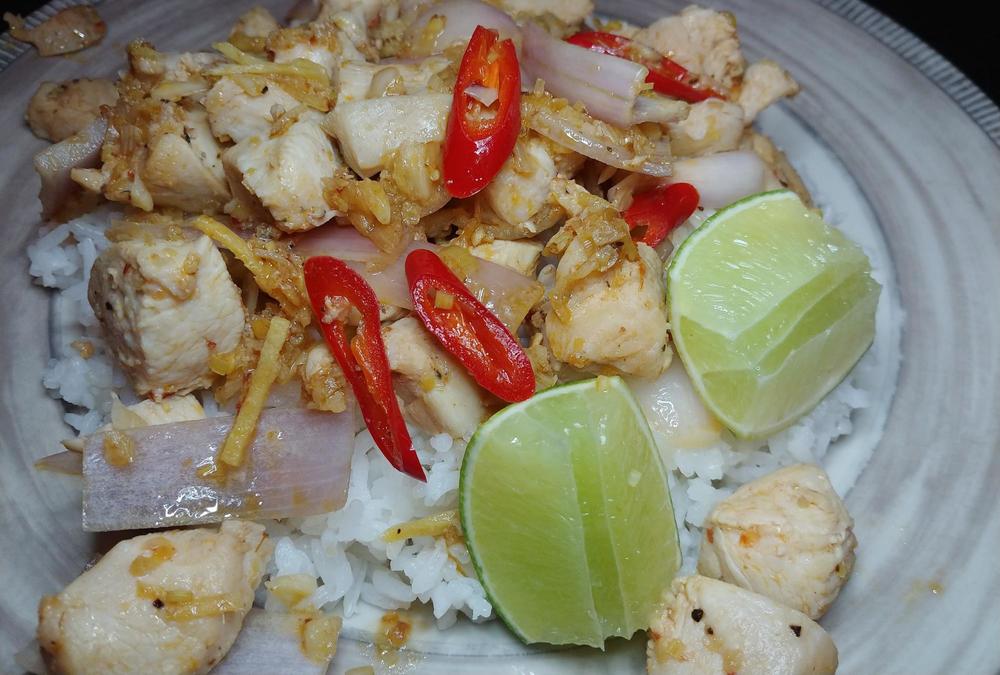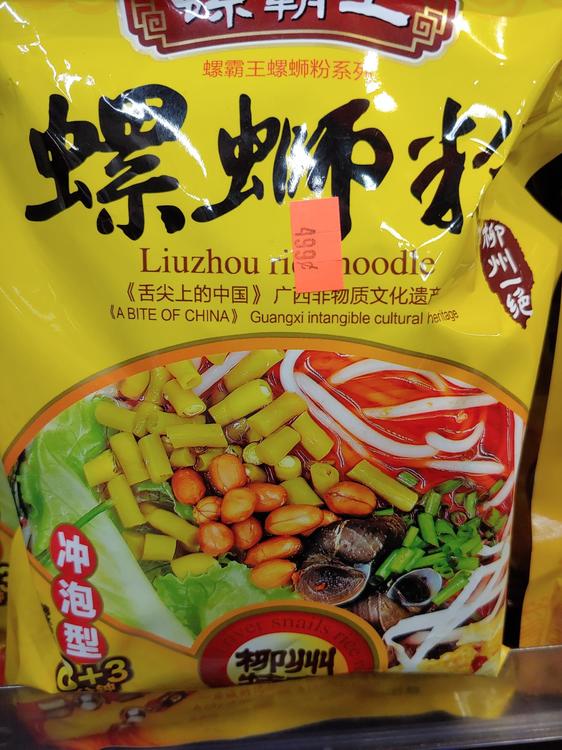
KennethT
participating member-
Posts
6,940 -
Joined
-
Last visited
Content Type
Profiles
Forums
Store
Help Articles
Everything posted by KennethT
-
Is that the same as the Lan Larb on 2nd Ave and 34th st? I was there a few times but was never impressed by it...
-
Haven't had much time for cooking lately, but had some tonight to make a favorite Viet chicken dish, Ga Xa Xao Ot...
-
Thirded!!!! @Dejah Will you be spending any time in Yogyakarta? My wife and I will be spending about a week in that area in the summer so we'd love to see some specifics about there - but I'd love to see all of it! Malaysia is high up on our list, and there is so much of Indonesia left to see....
-
I think trying to make a chocolate mold out of most normal items may be problematic because most things are not shaped in the way a mold needs to be. For plastic molding, the design needs to be slightly tapered so that the molded item comes out easily... so trying to vaquform using a standard household item will create problems.... I wonder if you can modify the item (like the tools) with some modeling clay or something to fill in the holes, but also to fill in the area that needs to be tapered?
-
Yeah, that place is definitely not for the carb conscious!
-
The People Who Eat the Same Lunch Every Day
KennethT replied to a topic in Food Traditions & Culture
I'm one of these people who brings basically the same thing for lunch each day - but I think the concept that it represents ANYTHING is ridiculous. I do it because it's convenient - I make my lunches for the week (usually a simiple pasta dish) all at once over the weekend and portion it into 4 portions. I go out for lunch 1 day a week. Usually, I'm so busy during the day that I don't have much time to eat or really enjoy what I'm eating anyway, so my lunches are designed to be eaten quickly and easily with no mess and such that I don't need to use my hands (which are commonly a little dirty)... -
First you have to decide which CAD program to get. FYI - many are ridiculously expensive. I learned AutoCAD in college - but I think many 3D printing or CNC milling shops use SolidWorks... Many years ago, I got AutoCAD R14 with an education discount.... then, years later, a friend of mine went to the Phillipines and brought me a CD with about 15 different cracked CAD packages, including AutoCAD2000 which I still use to this day. If you want to send me some designs, I can do the CAD work for you - but depending on how busy I am at work, my turnaround time may not be immediate but I'll do my best...
-
Some laydown freezers don't defrost at all - mine is a good example - I need to manually defrost it once in a while. In the old days, all fridge/freezers defrosted by reversing the compressor sending warmth through the cooling coils... but that is very inefficient, so with the advent of energy star ratings, et al, as well as microprocessor controls (rather than timers), the industry moved to using heater wires - it's much more energy efficient than reversing the compressor.
-
@gfweb I don't know. I've had many talks with engineers at many different appliance companies (part of what I do for work) and they seemed to intimate that the heater wires were there (located on the other side of the freezer's walls) to periodically warm up the walls to keep any ice from building up.
-
-
Self defrosting freezers have heater wires embedded in the sides - they periodically turn on (while the compressor is off). While it doesn't raise the temp of the freezer in general, anything located right next to the wall will definitely be affected more than it would be in a non-self defrosting freezer that has a much more stable (and usually lower) temperature. Also, laydown freezers don't warm up nearly as much when the lid is opened than when an upright freezer has its door opened.
-
I don't know... I've heard people complain about freezer taste (I'm not sure I know what that tastes like, but I think it has to do with oxidation or maybe fats going rancid), or dryness...
-
I think that if your food is well wrapped so there is little to no air contact, and you have a very cold freezer that is non-defrosting, you can store meat much longer. My parents had a huge laydown freezer that was kept at like -15F and we commonly had meats and roasts that were a couple years old with no issues, and no freezer burn. Standard refrigerator/freezers don't get cold enough, and the constant defrost cycle degrades the quality of long-stored things inside.
-
This is similar to the dish I had - it was at EMP right after they changed format from bistro to fine dining... they were MUCH less expensive back then! http://blog.chefsteps.com/2014/06/midnight-snack-video-daniel-humm-avocado-prawn-roulade/
- 134 replies
-
- 4
-

-
- Mexican
- Vegetarian
-
(and 1 more)
Tagged with:
-
I had a great dish in a fine dining restaurant many years ago - it was crabmeat rolled in a tube made from thin slices of haas avocado... I forget the details of it, but I remember that it was insanely good.
- 134 replies
-
- 5
-

-
- Mexican
- Vegetarian
-
(and 1 more)
Tagged with:
-
Otago over Christmas time - suggestions please!
KennethT replied to a topic in Australia & New Zealand: Dining
@blue_dolphin Thanks for your thoughts. Is Queenstown very loud and raucous? We were looking for something tranquil with great scenery. There seem to be some nice hotels in Queenstown that seem to have lake and mountain views, which is great, just as long as we're not surrounded by a bunch of party-ers or something like that. -
One of the Solaire products I linked to above is really small... Like 1 hamburger at a time small. It would be perfect for a small kitchen... I do worry about the smoke though....
-
My wife and I will be spending a short holiday in South Island over Christmas this year.... we're planning on spending most of our time seeing the many natural wonders of Otago - we're not really into bungee jumping or anything like that - but we do like hiking with nice scenery, kayaking, and other non-energetic stuff! We were thinking about staying in Queenstown as it seems to be central to a lot of the attractions of the region. We'll have a car, and don't mind a bit of driving - I'm actually looking forward to driving on the left side of the road, and driving around beautiful scenery with very little traffic - it will be a nice change of pace from my daily commute here in New York City! Is this a good idea, or are there any suggestions on other places we should use as a base of operations instead? Also, please chime in with any dining recommendations as well for good local fare...
-
I was looking into tabletop IR grills a long time ago, but never wound up getting it as I live in a small apartment with no outside ventilation. While I love the process of putting a shower cap on my smoke alarm, if it gets too smoky, the neighbors get worried.... But at the time, I was looking into these: https://solairegasgrills.com/products/portable-grills/
-
If you ever come to NYC, you HAVE to go to Murray's original store in the West Village... it will blow your mind...
-
Holy crap! Did Murray's open a store local to you or do they ship? I love Murray's!
-
I know what you're saying... you can actually get started for very little $$$... it doesn't take that much to keep plants happy. For me personally, I've been doing experiments in growing high value crops indoors as a business.. I have some extra warehouse space, and I enjoy doing this stuff, so I figured it would be a good fit. But growing for $ vs growing for yourself is very different, at least if you want to be profitable. To get there, it's all about optimization, getting the best tasting, highest yields out of the least amount of resources.
-
There's nothing bad about using fluorescent shop lights for seed starting - it's actually very common. Large growers have switched to LEDs for this just because it saves a ton of $ on energy usage, but the upfront cost is pretty high. Before I switched to LED, I used a cheap CFL for seed starting and cloning... it worked great. In fact, fluorescents are good for it because they put out a good amount of blue light and not as much red which helps keep plants from getting leggy.
-
Never had it myself, but Superiority Burger gets really good reviews



